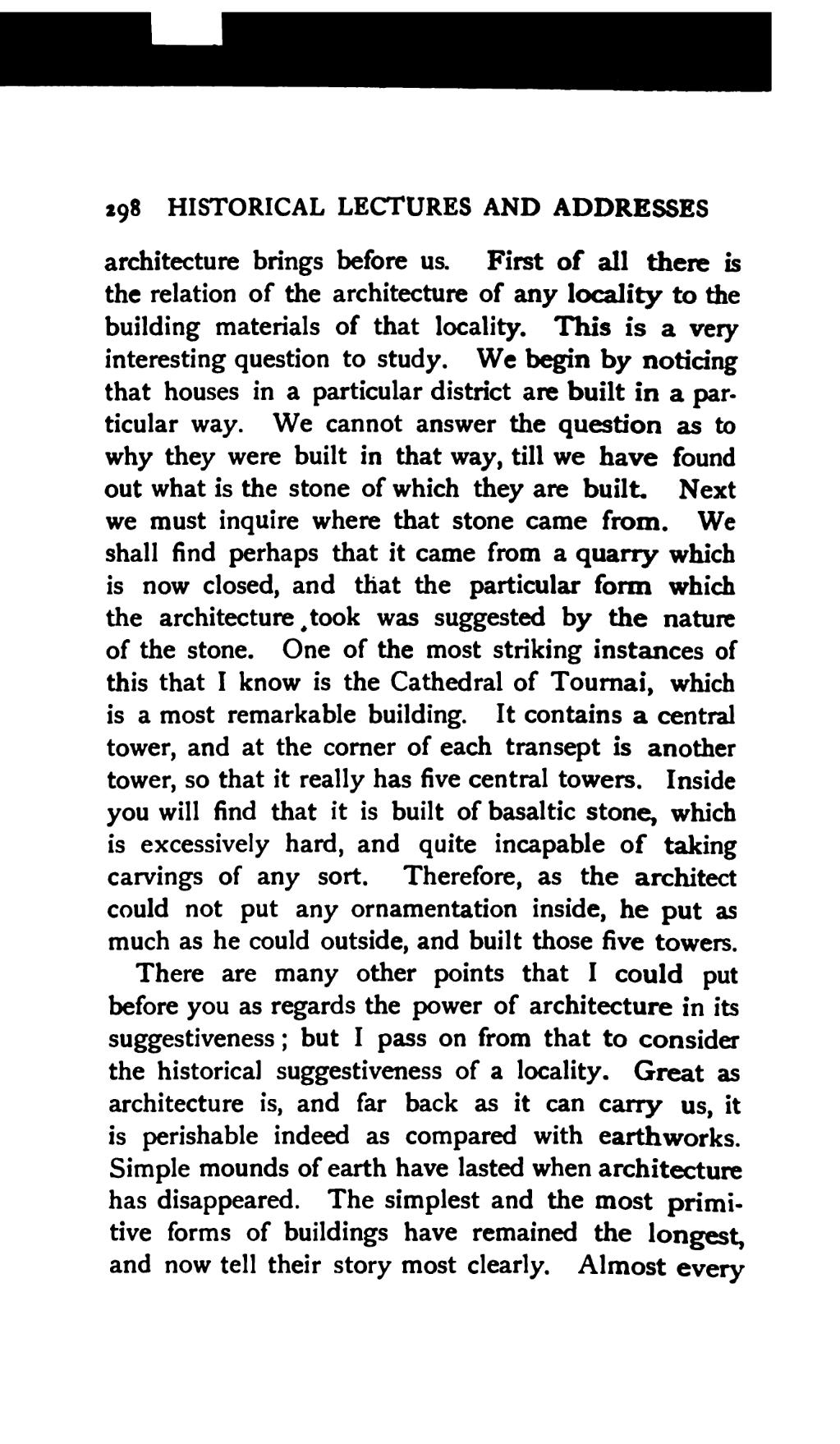architecture brings before us. First of all there is the relation of the architecture of any locality to the building materials of that locality. This is a very interesting question to study. We begin by noticing that houses in a particular district are built in a particular way. We cannot answer the question as to why they were built in that way, till we have found out what is the stone of which they are built. Next we must inquire where that stone came from. We shall find perhaps that it came from a quarry which is now closed, and that the particular form which the architecture took was suggested by the nature of the stone. One of the most striking instances of this that I know is the Cathedral of Tournai, which is a most remarkable building. It contains a central tower, and at the corner of each transept is another tower, so that it really has five central towers. Inside you will find that it is built of basaltic stone, which is excessively hard, and quite incapable of taking carvings of any sort. Therefore, as the architect could not put any ornamentation inside, he put as much as he could outside, and built those five towers.
There are many other points that I could put before you as regards the power of architecture in its suggestiveness; but I pass on from that to consider the historical suggestiveness of a locality. Great as architecture is, and far back as it can carry us, it is perishable indeed as compared with earthworks. Simple mounds of earth have lasted when architecture has disappeared. The simplest and the most primitive forms of buildings have remained the longest, and now tell their story most clearly. Almost every
